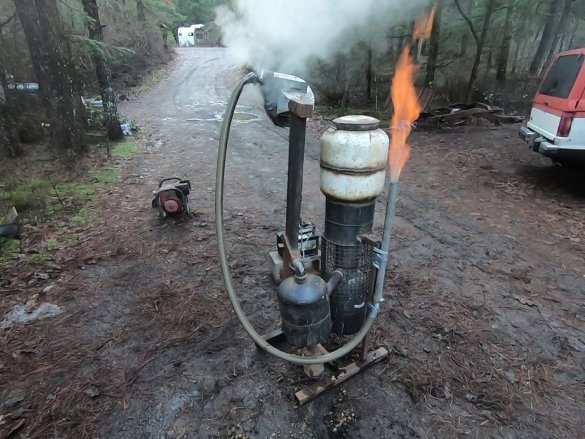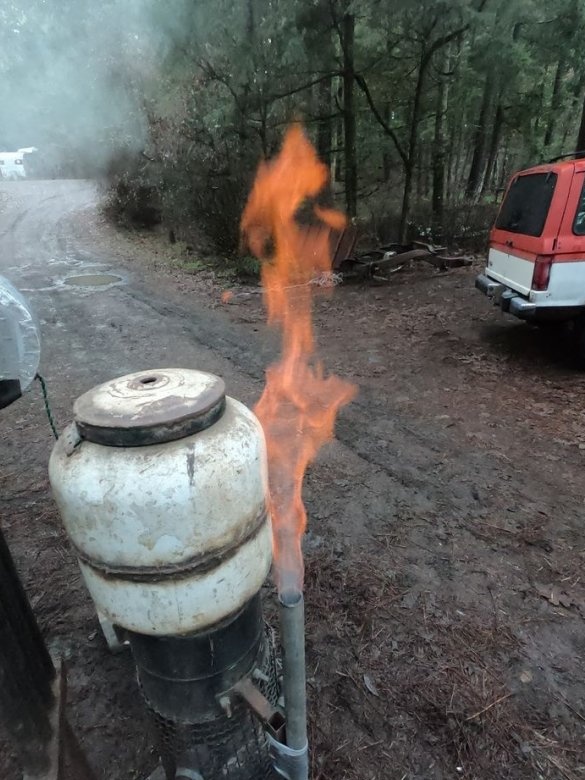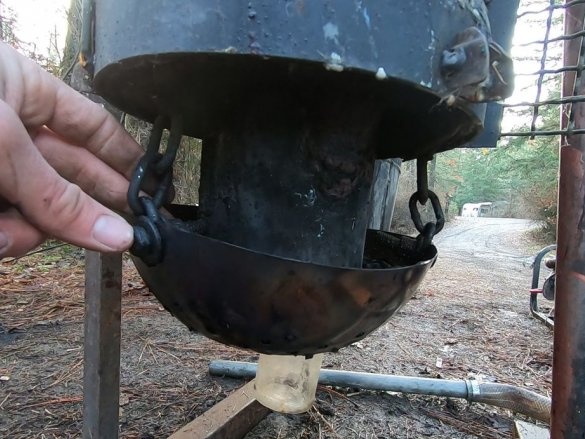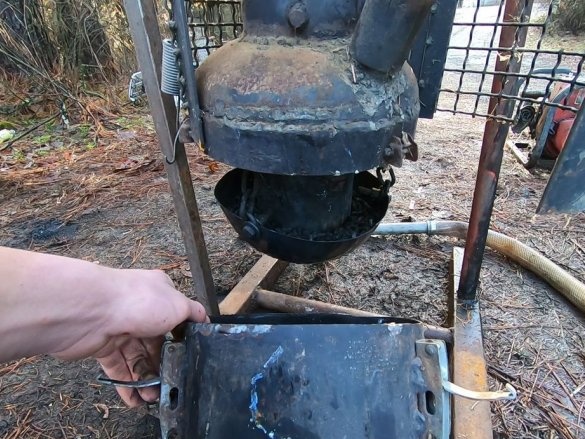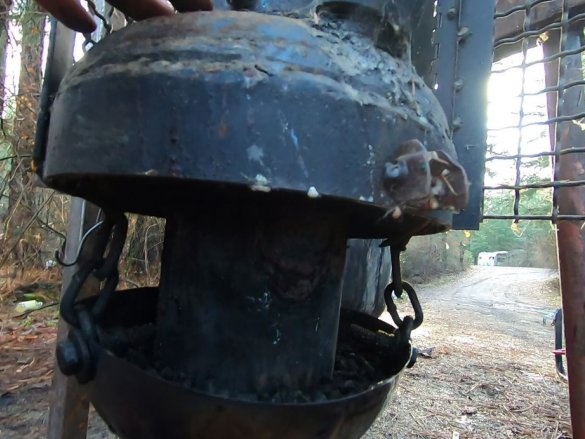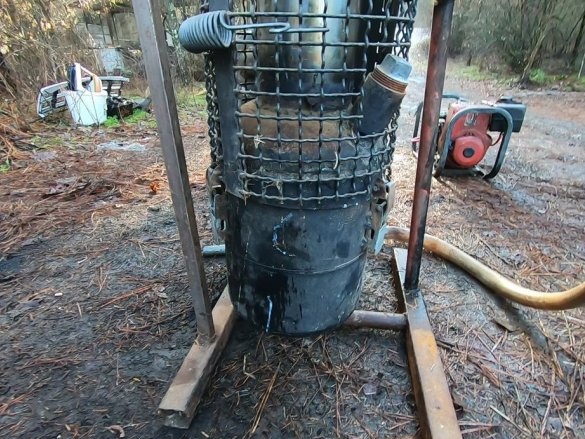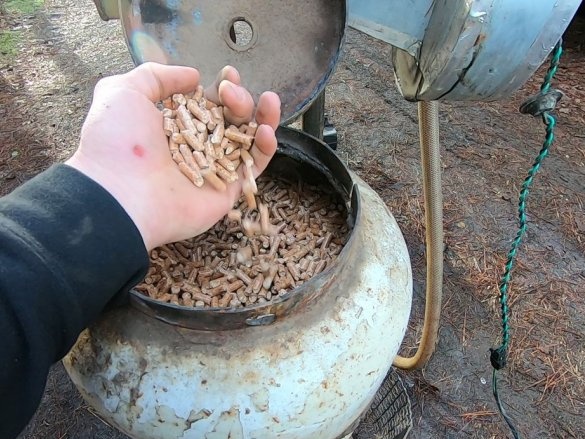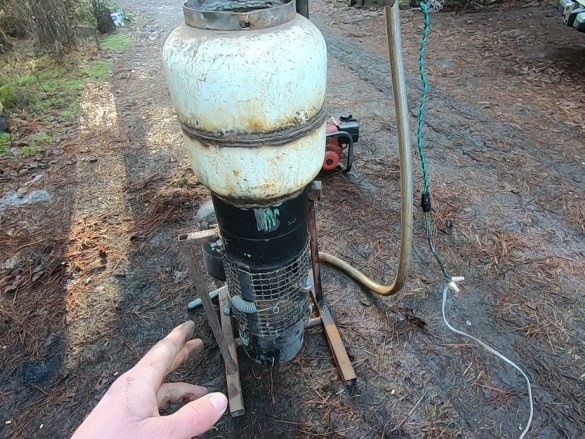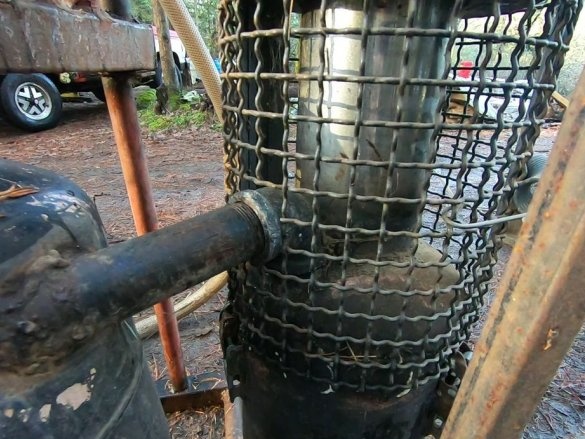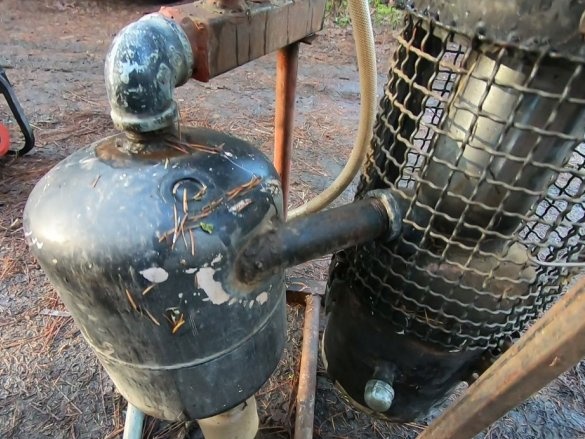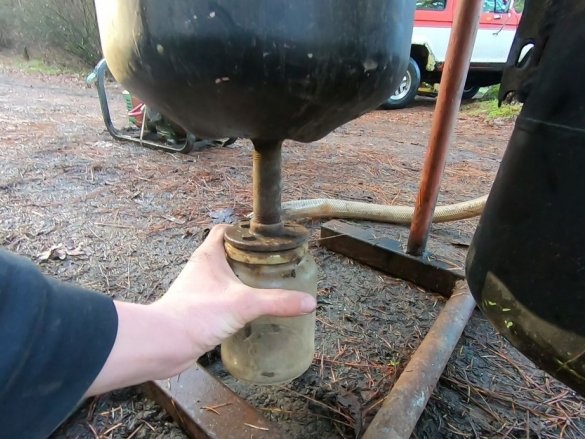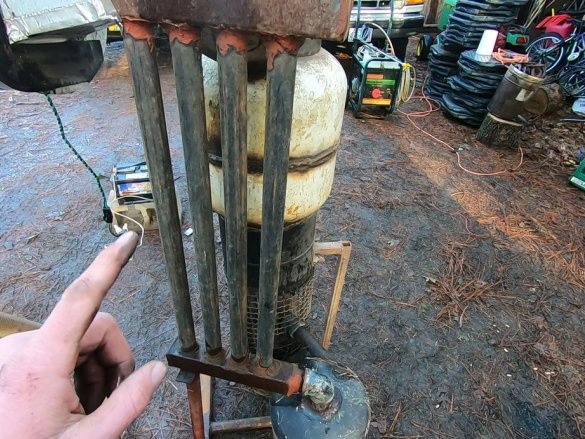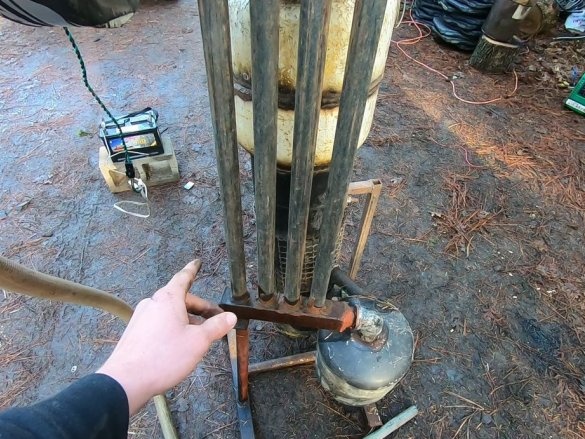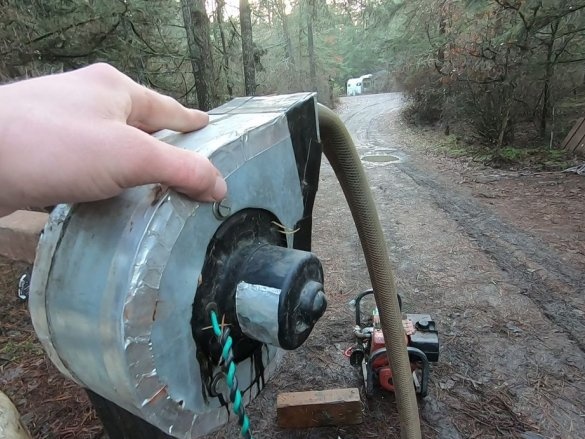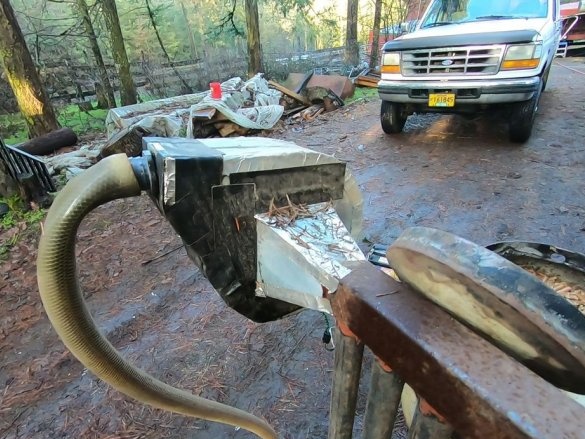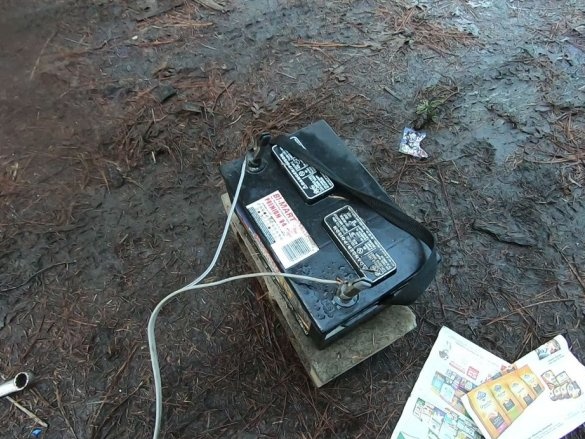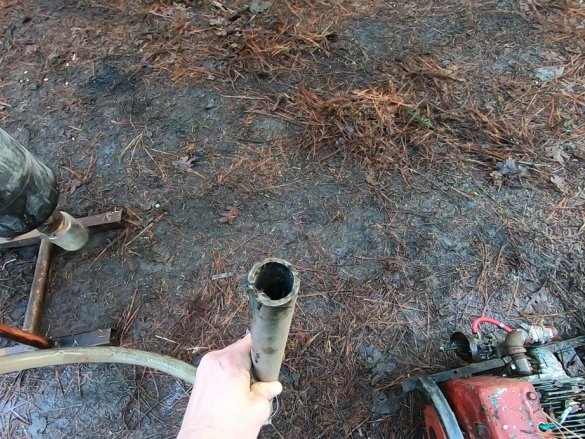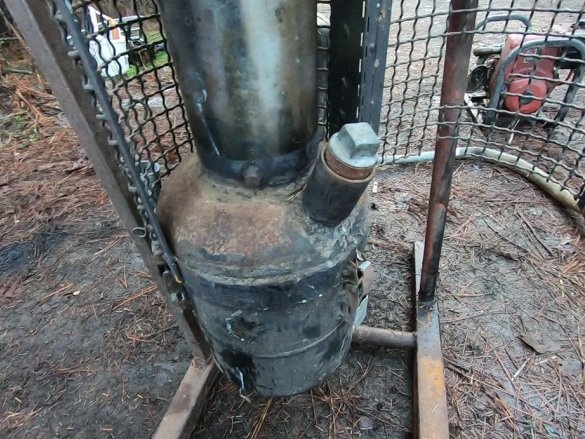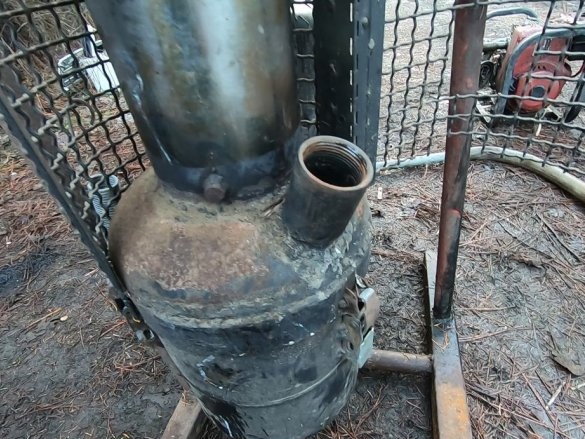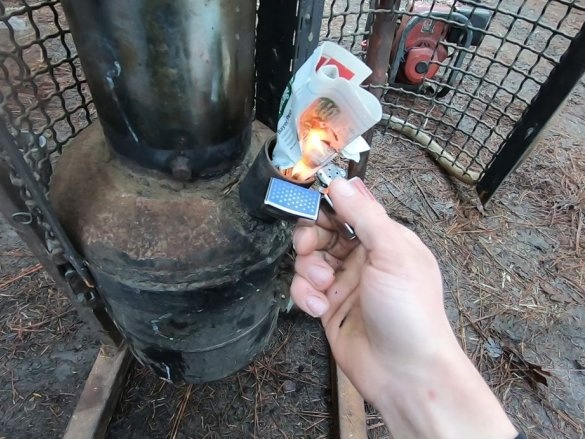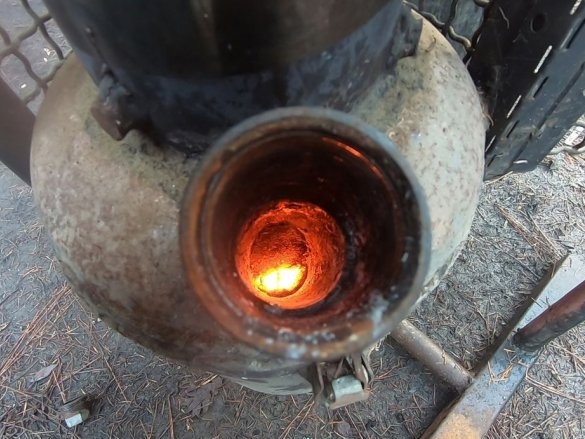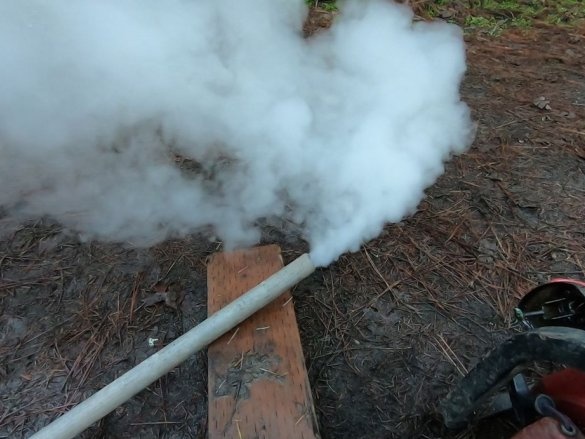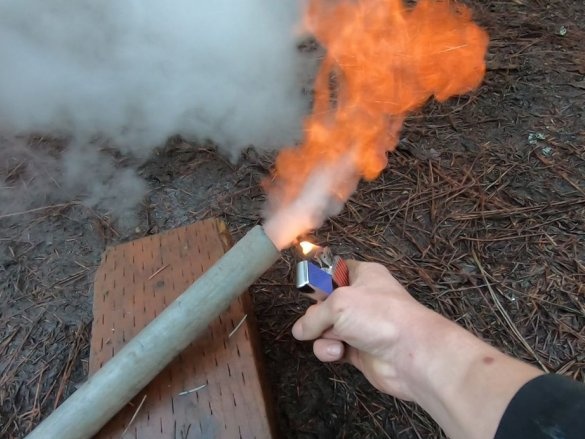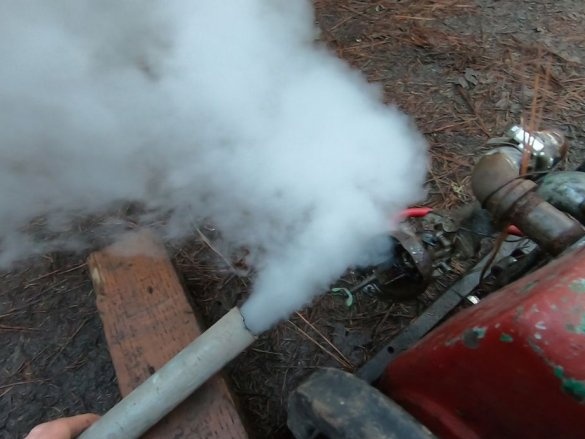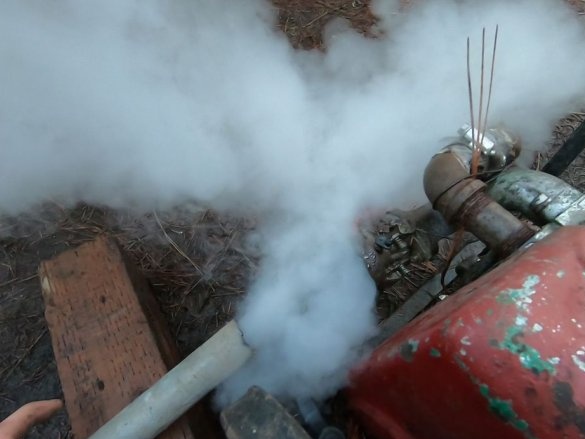In this article, the master talks about his gas generator. Here we will talk about the general principles of manufacturing such a device.
The wizard has already built a similar device. In this product, he tried to eliminate the shortcomings of the first gas generator.
The installation itself consists of several parts.
How much the installation will work on one tab of fuel depends on the volume of the loading hopper. According to the master, kilograms of fuel are equivalent to 4 liters of gasoline when comparing energy efficiency. Fuel can be wood chips, granules or even dry leaves.
The next part is the flame tube (firebox). It is divided into several zones and how much gas will be generated and how much power the engine can start depends on its volume. The master gives a table that he found on the FEMA (Federal Emergency Management Agency - USA). The table shows the ratio of pipe diameter and length to engine power.
2 "- 16" - 5 hp
4 "- 16" - 15hp
6 "- 16" - 30hp
7 "- 18" - 40hp
8 "- 20" - 50hp
9 "- 22" - 65hp
10 "- 24" - 80hp
11 "- 26" - 100 "
12 "- 28" - 120hp
13 "- 30" - 140hp
14 "- 32" - 160hp
The fuel burning in the furnace falls to the lower part, on which a disk or a bowl with holes is fixed. Residues from combustion accumulate on this bowl. The lower part is closed by a cylinder. An igniter tube is welded on top of the firebox.
A pipe comes out of the furnace, which connects to the tank. The capacity serves as a filter. Gas has many impurities. Passing through the filter, it is cleaned of tar and water. Condensation builds up at the bottom of the filter. Then the gas passes through the radiator (profile pipe welded by a snake) and is cooled.
For gas to go all this way, an external effect is needed. Something must create traction. The wizard installed an electric fan that runs on battery power. It is needed at the initial stage. When the engine is started, the piston will create the necessary vacuum. In the future, the master wants to install a fan with a manual drive there, this will eliminate the problem of electricity at the initial stage.
To start the installation you need to do the following:
Fill dry fuel into the hopper.
Turn on the fan.
Open the ignition plug, set fire to paper or dry alcohol, and lower it into the ignition tube.
Wait until the fuel lights up and tighten the plug into place.
A tube is connected to the radiator output. Through it, smoke will first come out, and then pyrolysis gas. For the correct composition of the combustible mixture, you still need to install a carburetor. This is a primitive tee with a tap, with which you can adjust the proportions of gas and oxygen.
Using this gas, you can start the engine. Of course, for this it is necessary to modify its fuel system.
In the video below you can see an example of the installation, as well as listen to what the wizard tells about it.

